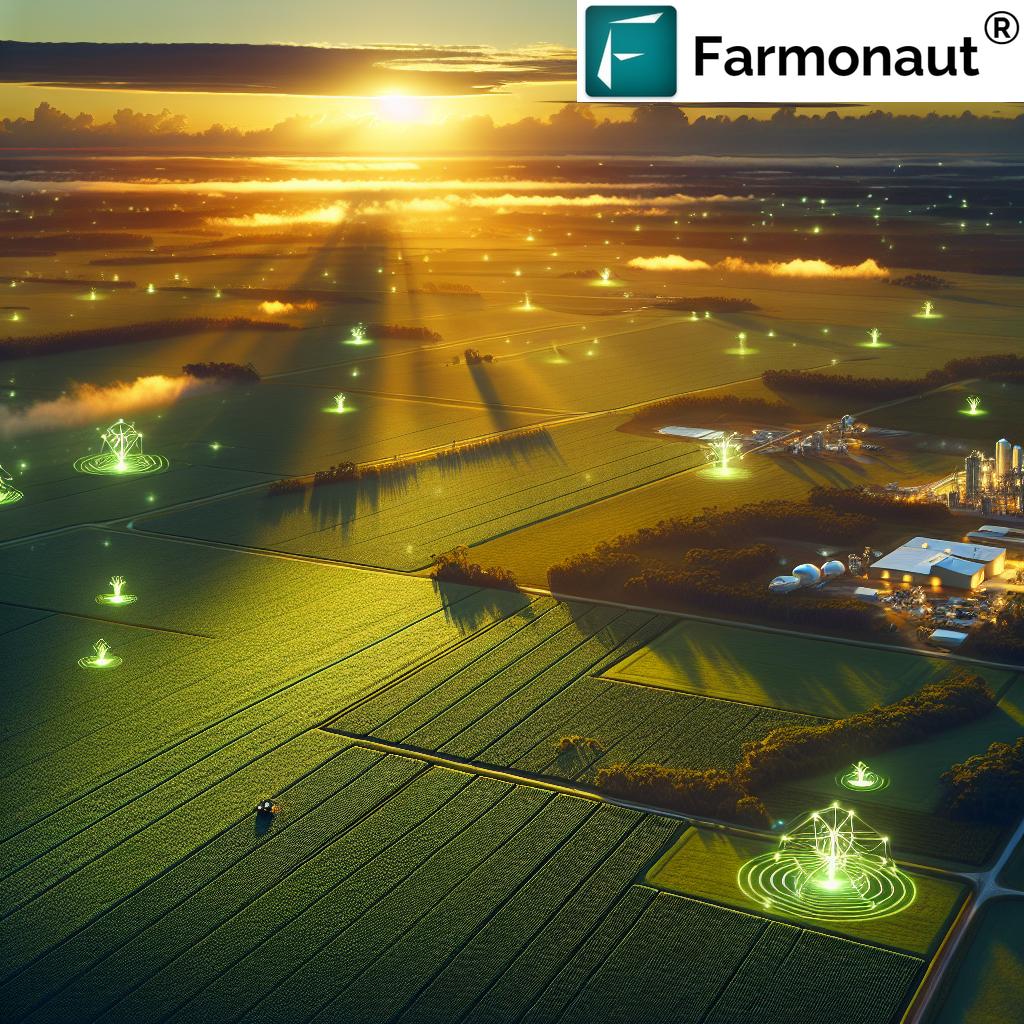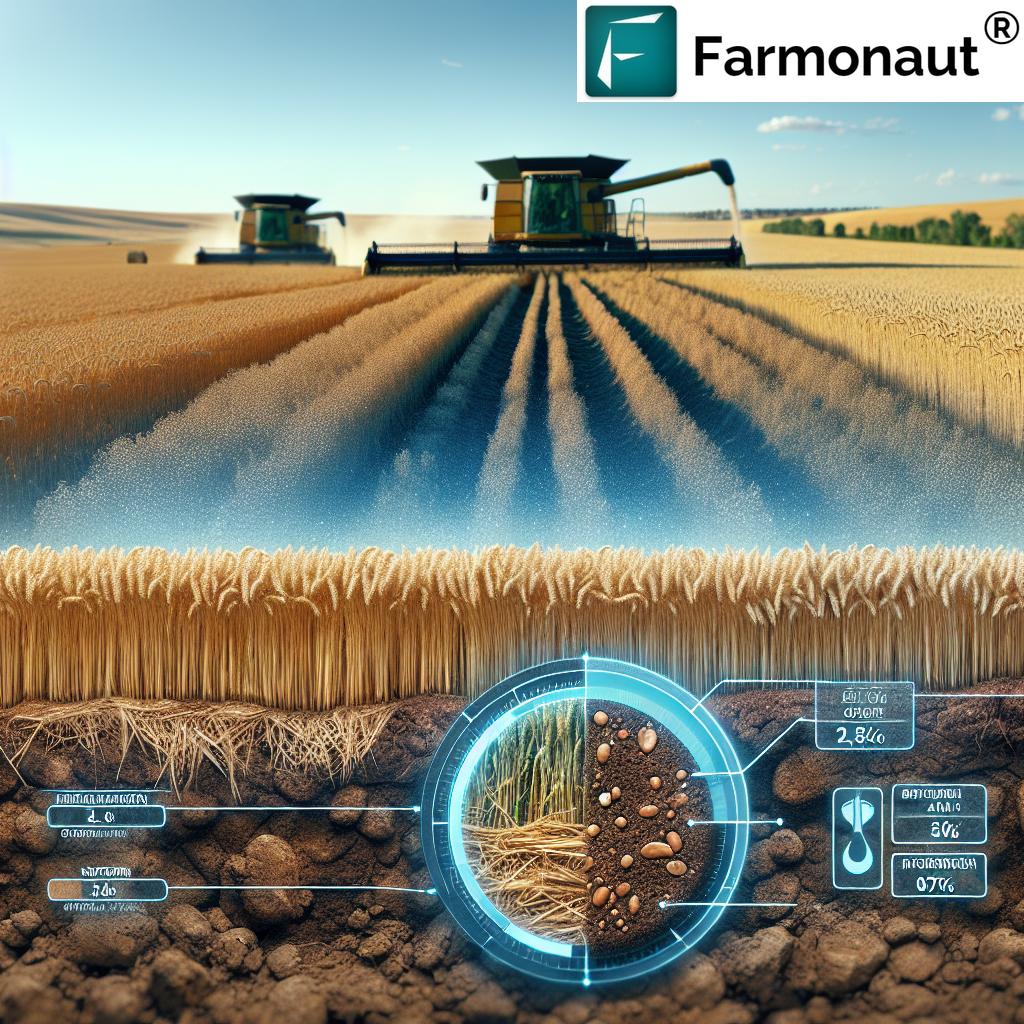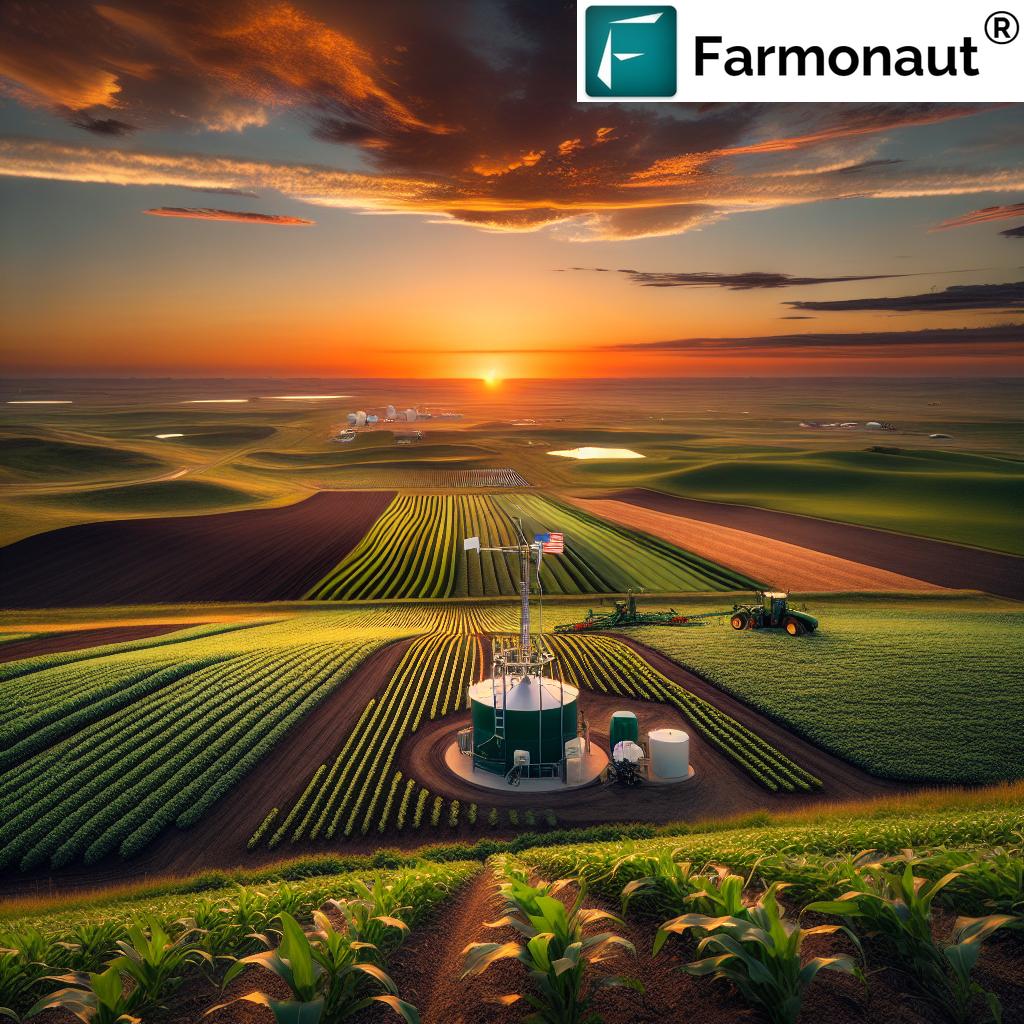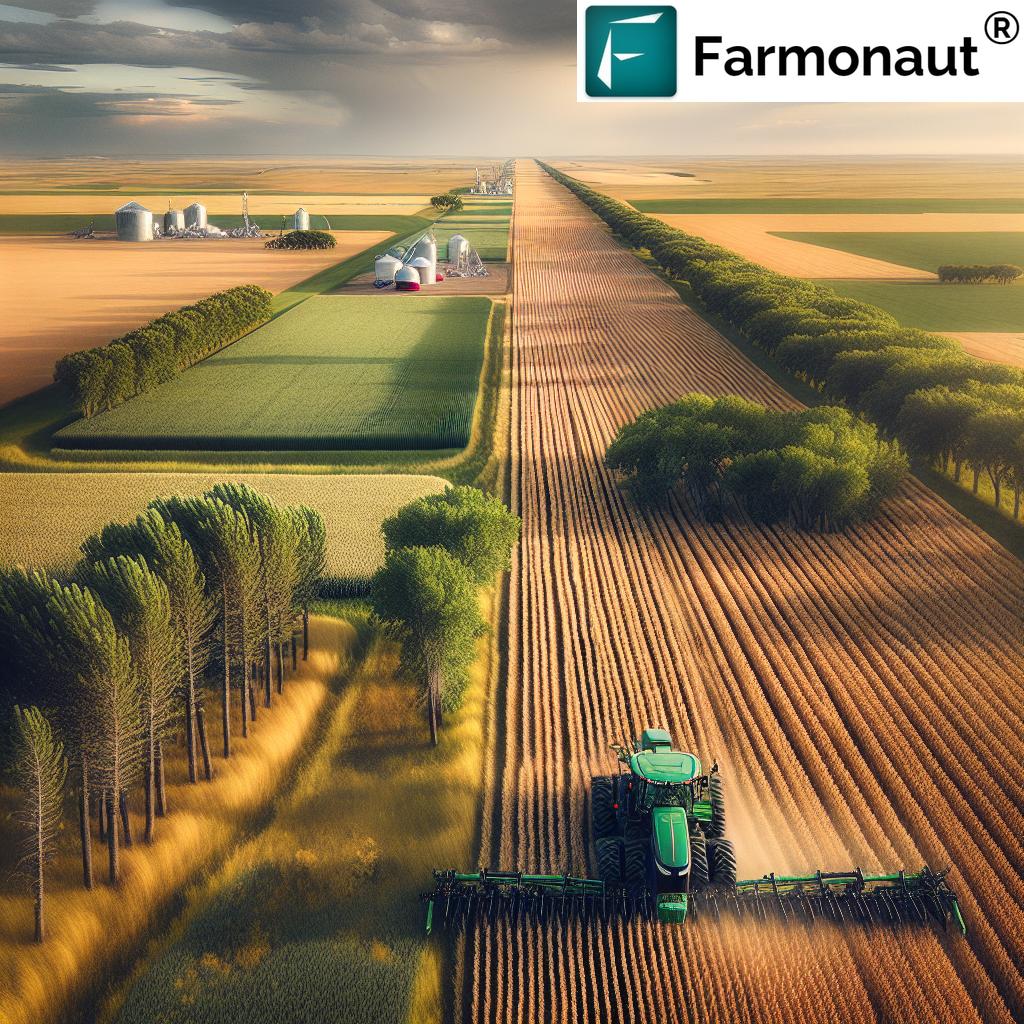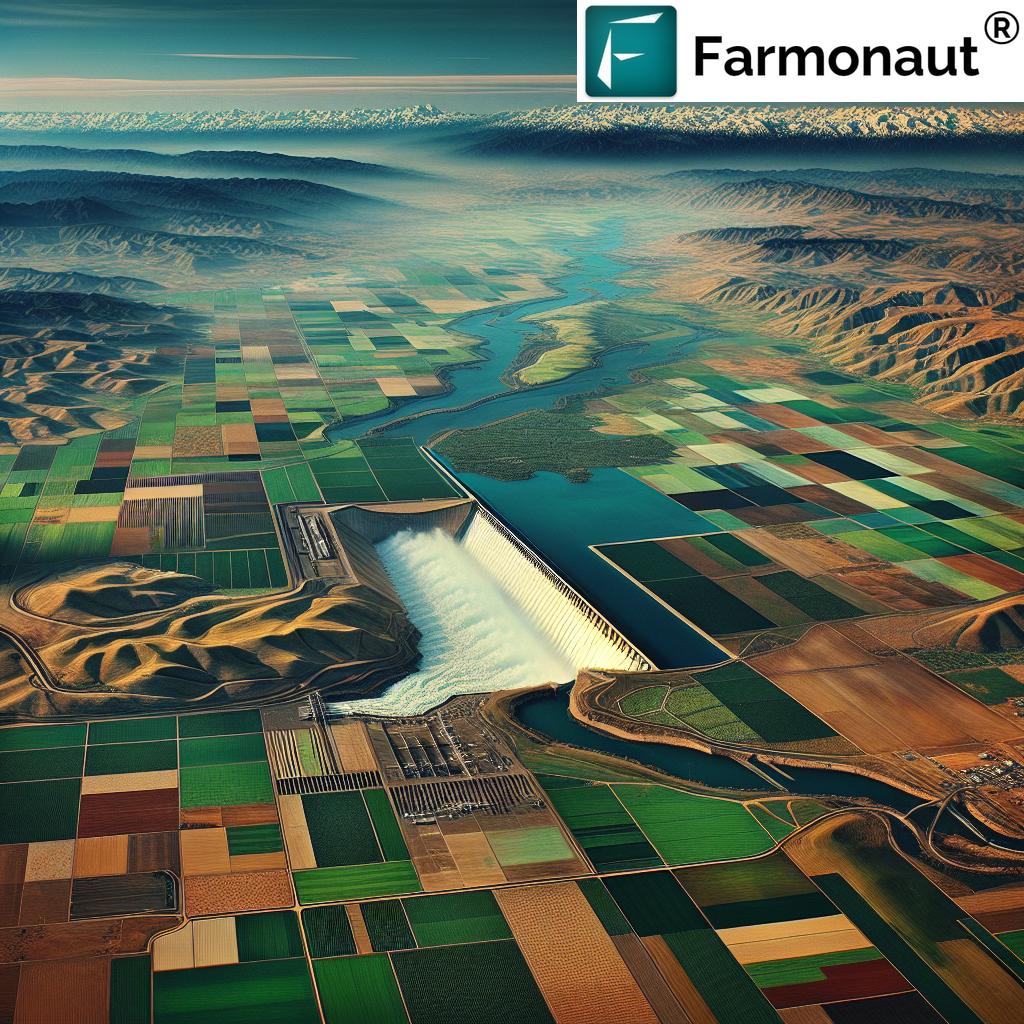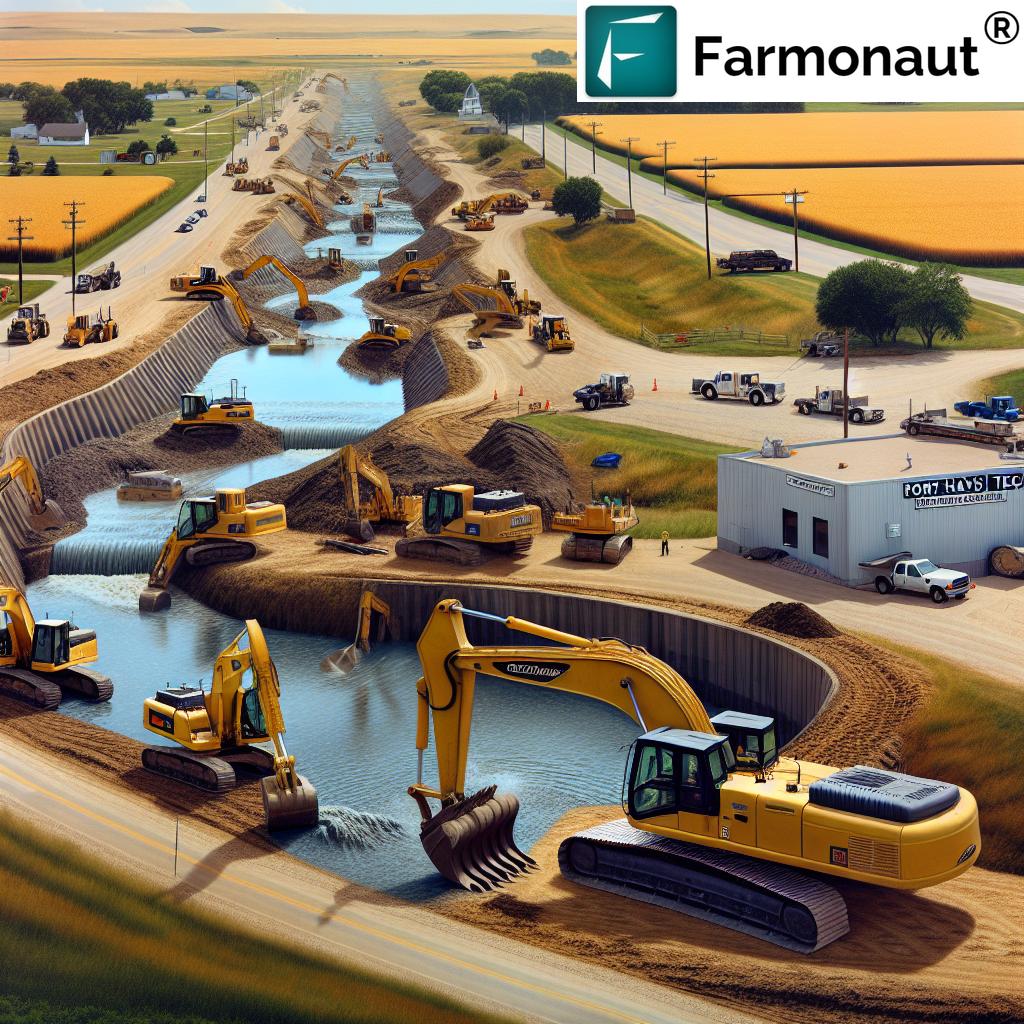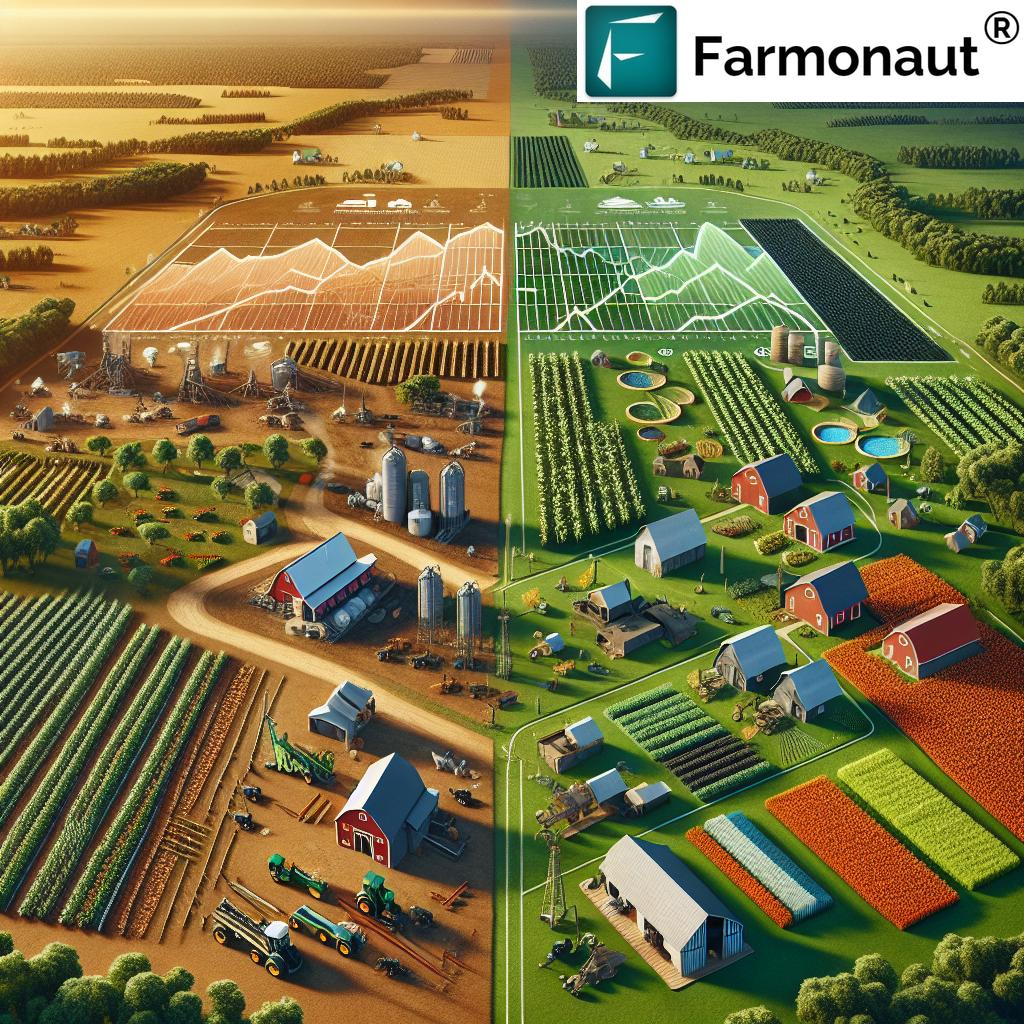Uncovering the Red River Valley’s Agricultural Evolution: From Glacial Plains to Thriving Farms
“The Red River Valley’s transformation from glacial plains to agricultural powerhouse spans over 10,000 years of geological and human history.”
Welcome to our exploration of the fascinating journey of the Red River Valley, a testament to nature’s power and human perseverance. In this comprehensive look at the region’s agricultural evolution, we’ll uncover the remarkable transformation from icy expanses to bountiful farmlands that feed millions. Join us as we delve into the rich tapestry of history, culture, and scientific advancement that has shaped this unique landscape.
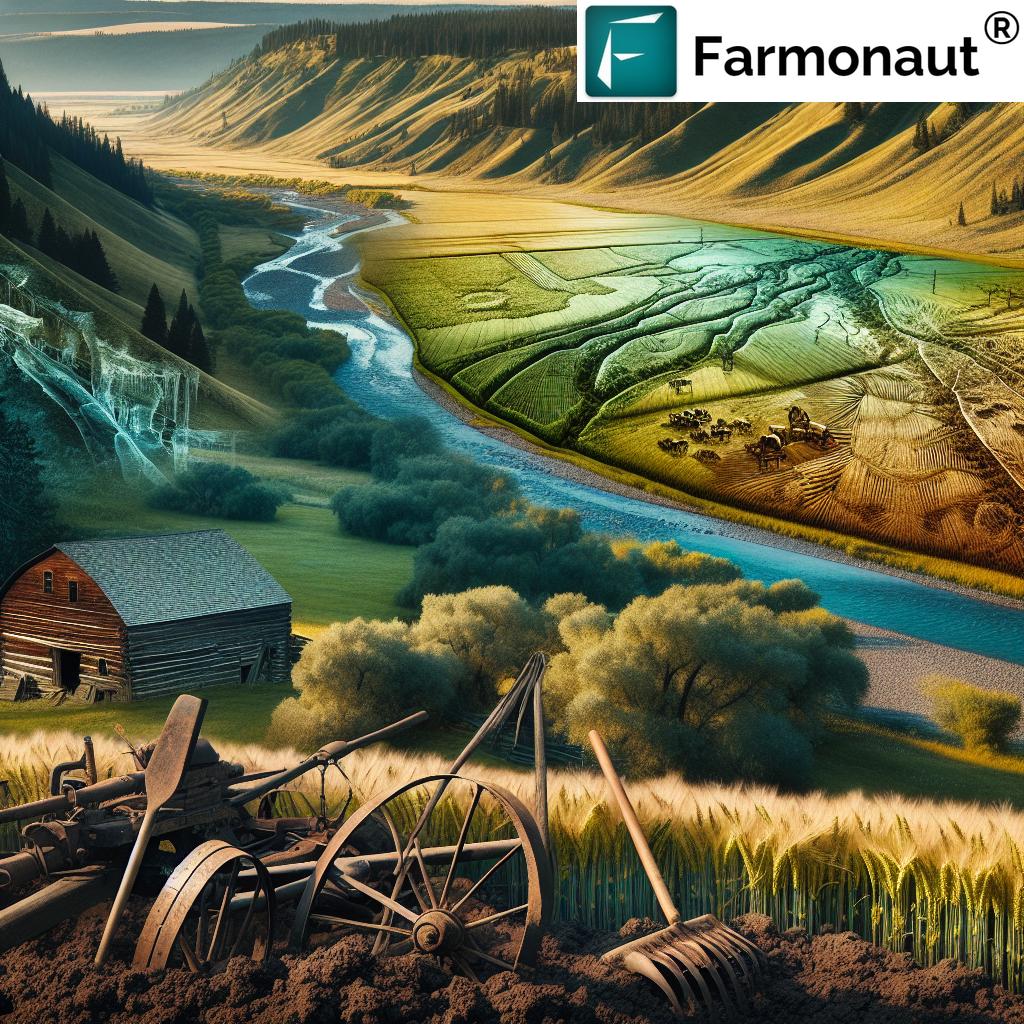
The Glacial Genesis: Carving the Valley
Our story begins over 10,000 years ago when massive glaciers covered much of North America. As these ice giants retreated, they sculpted the land, leaving behind the fertile basin we now know as the Red River Valley. This glacial evolution set the stage for an agricultural revolution that would unfold over millennia.
- Formation of rich, glacial till soil
- Creation of the flat, expansive prairie
- Establishment of the Red River’s northward flow
The retreating glaciers left behind a legacy of nutrient-rich soil, depositing minerals and organic matter that would become the foundation of the valley’s agricultural success. This glacial gift laid dormant for thousands of years, waiting for the touch of human ingenuity to unlock its potential.
Native American Stewardship: The First Farmers
Long before European settlers arrived, Native American tribes were the first to recognize and harness the valley’s agricultural potential. These indigenous peoples developed sophisticated farming techniques adapted to the unique environmental conditions of the region.
- Cultivation of native plants such as wild rice and sunflowers
- Development of sustainable hunting and gathering practices
- Seasonal migration patterns in harmony with the land
The Native Americans’ deep connection to the land fostered a native wisdom that would influence farming practices for generations to come. Their stories and traditions are an integral part of the valley’s historical narrative, reminding us of the importance of sustainable stewardship.
The Dawn of European Settlement: A New Agricultural Era
The 19th century brought a wave of European settlers to the Red River Valley, forever changing the landscape and agricultural practices of the region. These newcomers saw the vast potential of the prairie and set about transforming it into a breadbasket for a growing nation.
- Introduction of new crops and farming techniques
- Establishment of homesteads and small family farms
- Development of transportation networks to support agriculture
As settlers poured into the valley, they brought with them dreams of prosperity and a determination to tame the wild prairie. The clash of cultures between Native Americans and European settlers would shape the social and agricultural landscape for decades to come.
Bonanza Farming: The Rise of Industrial Agriculture
The late 19th century saw the emergence of bonanza farming, a phenomenon that would redefine agriculture in the Red River Valley. These massive farms, often spanning thousands of acres, represented a shift towards industrial-scale production.
- Mechanization of farming processes
- Large-scale wheat production
- Creation of a new class of wealthy landowners
Bonanza farms transformed the valley into a major agricultural powerhouse, but they also brought significant social and environmental changes. The era of bonanza farming laid the groundwork for the modern agricultural landscape we see today.
“Students and professors collaborated on a documentary project, conducting over 50 interviews to uncover the valley’s rich agricultural past.”
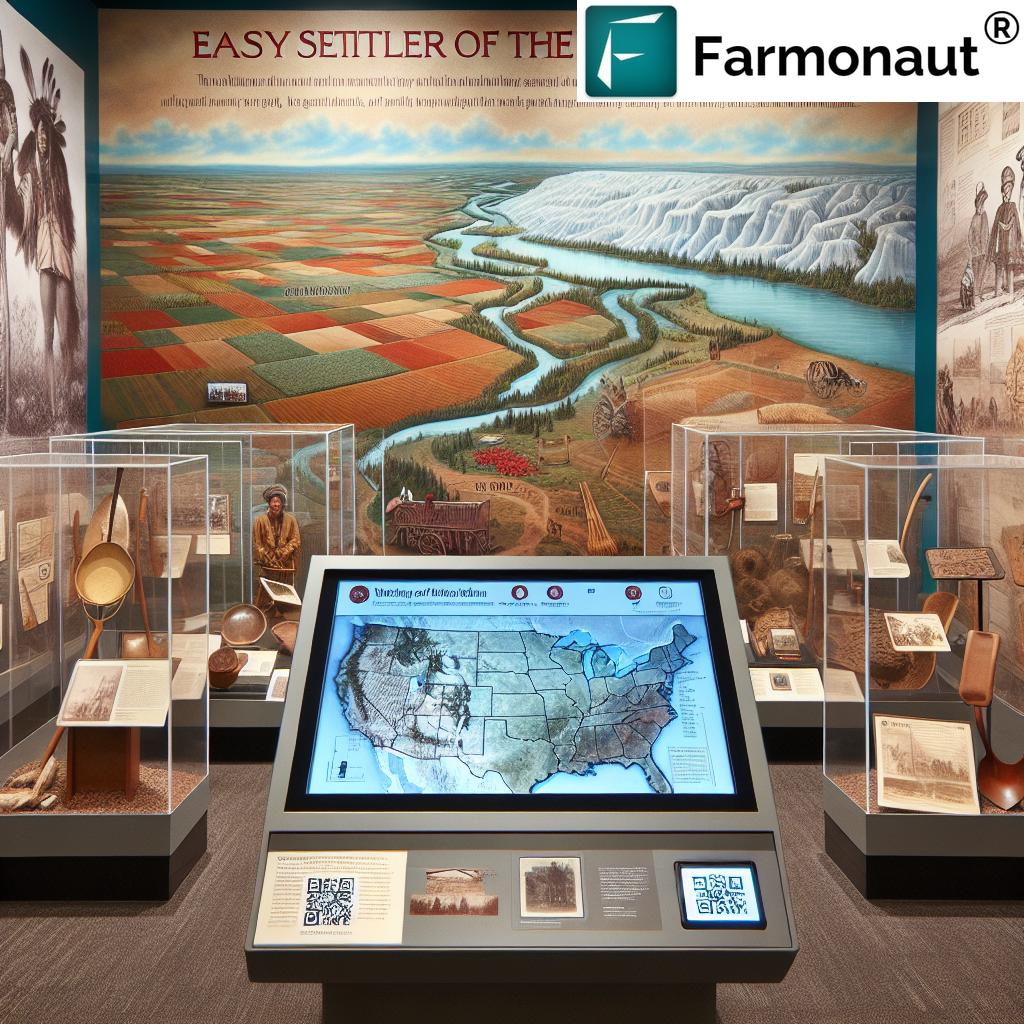
The 20th Century: Technological Revolution and Environmental Challenges
The 20th century brought unprecedented technological advancements to farming in the Red River Valley. From the introduction of tractors to the development of new crop varieties, agriculture underwent a rapid transformation.
- Adoption of chemical fertilizers and pesticides
- Implementation of irrigation systems
- Development of genetically modified crops
While these innovations dramatically increased yields, they also introduced new environmental challenges. Soil erosion, water pollution, and the loss of biodiversity became growing concerns as the century progressed.
Modern Farming: Balancing Productivity and Sustainability
Today, farming in the Red River Valley is at a crossroads. Farmers are seeking ways to maintain high productivity while addressing the environmental concerns of the past. This has led to the adoption of innovative practices and technologies.
- Precision agriculture techniques
- Conservation tillage and crop rotation
- Integration of digital technologies for farm management
One such technology making waves in the agricultural sector is Farmonaut, a pioneering agricultural technology company. Farmonaut offers advanced, satellite-based farm management solutions via android, iOS, web/browser App, and API. Their mission is to make precision agriculture affordable and accessible to farmers worldwide by integrating innovative technology and data-driven insights into traditional farming practices.
Farmonaut’s platform provides valuable services such as real-time crop health monitoring, AI-based advisory systems, blockchain-based traceability, and resource management tools. These technologies are helping farmers in the Red River Valley and beyond to optimize their operations and reduce their environmental impact.
Check out Farmonaut’s offerings:
For developers interested in integrating Farmonaut’s technology into their own solutions, check out their API and API Developer Docs.
Preserving the Past, Embracing the Future
As we look to the future of agriculture in the Red River Valley, it’s crucial to remember and learn from its rich history. The recent documentary project, “Glacier Prairie Farm: The Evolution of the Red River Valley of the North,” by Dr. Angela Smith and her students at North Dakota State University (NDSU), serves as a testament to this commitment to preserving the past.
This 50-minute film, showcased at The Fargo Theatre, encapsulates the local history and environmental evolution of the region, emphasizing the rich stories of both its soil and its people. The project involved extensive research through the NDSU Archives, State Archives, literature, and interviews with historians, providing a wealth of stories about notable black and white bonanza farmers and Indigenous peoples of the region.
The Museum Exhibit: Bringing History to Life
Building on the success of the documentary, Dr. Smith’s Museum Studies class is now focused on creating a permanent exhibit at Bonanzaville in West Fargo. This exhibit aims to further explore the Red River Valley’s history through artifacts and information, providing a tangible connection to the past for visitors.
- Curating historical farming implements
- Displaying indigenous artifacts
- Creating interactive displays on soil composition and glacial history
This transition into curating exhibit materials represents an enriching experience for the students, who are gaining practical skills essential for careers in museums and cultural presentation. It’s a hands-on approach to learning that bridges the gap between academic study and real-world application.
The Role of Technology in Modern Agriculture
As we’ve seen throughout the history of the Red River Valley, technological advancements have played a crucial role in shaping agricultural practices. Today, companies like Farmonaut are at the forefront of this continuing evolution, offering innovative solutions to age-old farming challenges.
Farmonaut’s satellite-based crop health monitoring system, for example, allows farmers to track vegetation health (NDVI), soil moisture levels, and other critical metrics in real-time. This data helps farmers make informed decisions about irrigation, fertilizer usage, and pest management, ultimately optimizing crop yields and reducing resource wastage.
The Future of Farming in the Red River Valley
As we look to the future, it’s clear that the agricultural landscape of the Red River Valley will continue to evolve. Climate change, technological advancements, and changing consumer preferences will all play a role in shaping the future of farming in the region.
- Adoption of climate-resilient crop varieties
- Increased focus on sustainable farming practices
- Integration of AI and machine learning in farm management
Companies like Farmonaut are well-positioned to help farmers navigate these changes. Their AI-driven Jeevn AI Advisory System, for instance, delivers real-time insights, weather forecasts, and expert crop management strategies to farmers, helping them adapt to changing conditions and optimize their operations.
Conclusion: A Legacy of Resilience and Innovation
The story of the Red River Valley’s agricultural evolution is one of resilience, innovation, and adaptation. From the retreat of glaciers to the rise of precision agriculture, this region has continually reinvented itself to meet the challenges of each era.
As we honor the legacy of Native American stewardship, the pioneering spirit of early settlers, and the innovative drive of modern farmers, we look forward to a future where technology and tradition work hand in hand to create a sustainable and prosperous agricultural sector.
The Red River Valley stands as a testament to the enduring relationship between humans and the land, reminding us of our responsibility to preserve and nurture the soil that sustains us. As we move forward, let us carry with us the lessons of the past and the promise of the future, continuing to write new chapters in the rich history of this remarkable region.
FAQ Section
Q: What role did glaciers play in the formation of the Red River Valley?
A: Glaciers played a crucial role in shaping the Red River Valley. As they retreated over 10,000 years ago, they carved out the flat basin and deposited rich, mineral-laden soil that would become the foundation for the region’s agricultural success.
Q: How did Native Americans contribute to the agricultural development of the valley?
A: Native Americans were the first to cultivate the land in the Red River Valley. They developed sustainable farming practices adapted to the local environment, cultivating native plants like wild rice and sunflowers, and establishing a deep connection with the land that influenced future farming practices.
Q: What was bonanza farming, and how did it impact the Red River Valley?
A: Bonanza farming was a phenomenon of large-scale, industrial agriculture that emerged in the late 19th century. These massive farms, often spanning thousands of acres, transformed the valley into a major agricultural powerhouse but also brought significant social and environmental changes.
Q: How has technology changed farming in the Red River Valley over the years?
A: Technology has dramatically transformed farming in the region, from the introduction of mechanized equipment in the early 20th century to today’s precision agriculture techniques. Modern technologies like satellite imaging, AI-driven advisory systems, and blockchain-based traceability are helping farmers optimize their operations and improve sustainability.
Q: What challenges does agriculture in the Red River Valley face today?
A: Current challenges include balancing productivity with environmental sustainability, adapting to climate change, managing water resources, and integrating new technologies. Farmers are also working to address issues like soil erosion and biodiversity loss while maintaining high crop yields.
Timeline of Red River Valley Agricultural Evolution
| Time Period | Event/Development | Impact on Agriculture | Environmental Changes | Cultural Significance |
|---|---|---|---|---|
| 10,000 BCE | Glacial Retreat | Formation of fertile soil | Creation of flat prairie landscape | Set stage for future habitation |
| 1000 BCE – 1700s CE | Native American Cultivation | Introduction of sustainable farming practices | Managed prairie ecosystem | Deep spiritual connection to land |
| 1800s | European Settlement | Introduction of new crops and techniques | Increased land cultivation | Clash of Native and European cultures |
| 1870s – 1890s | Bonanza Farming Era | Large-scale wheat production | Extensive prairie conversion | Rise of industrial agriculture |
| 1900s – 1950s | Mechanization | Increased efficiency and output | Soil erosion concerns emerge | Shift from labor-intensive to capital-intensive farming |
| 1960s – 1990s | Green Revolution | Adoption of chemical inputs and new crop varieties | Water pollution and biodiversity loss | Debate over traditional vs. modern farming methods |
| 2000s – Present | Precision Agriculture | Data-driven farming decisions | Focus on sustainability and conservation | Integration of technology with agricultural heritage |
Earn With Farmonaut: Affiliate Program
Earn 20% recurring commission with Farmonaut’s affiliate program by sharing your promo code and helping farmers save 10%. Onboard 10 Elite farmers monthly to earn a minimum of $148,000 annually—start now and grow your income!
Farmonaut Subscriptions





